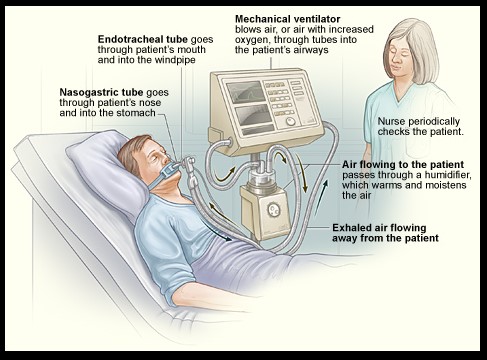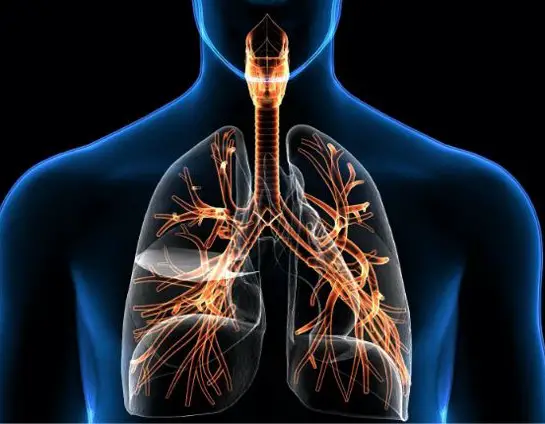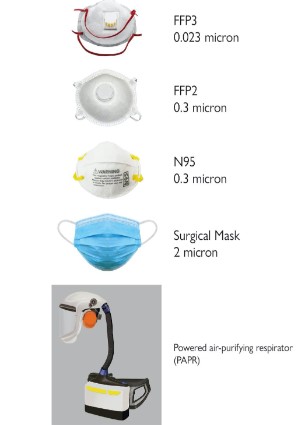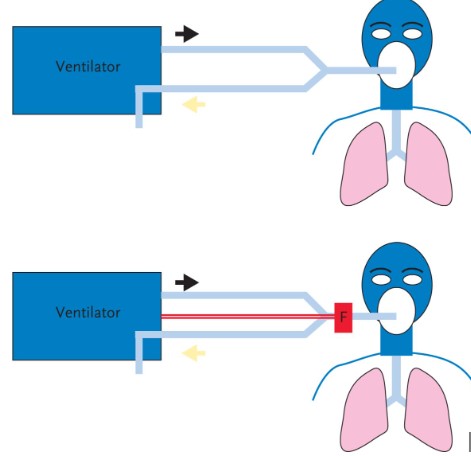In the realm of medical equipment essential for managing patient care, respirators and ventilators stand out as crucial devices, yet they are often confused due to their related functionalities. Each plays a significant role in different healthcare scenarios, addressing distinct patient needs. While they may appear similar at a glance, their applications and operations differ markedly, which is vital for both medical professionals and the public to understand.
Respirators are protective devices used to shield the wearer from inhaling harmful substances, such as dust, airborne microorganisms, and chemicals. In contrast, ventilators are life-supporting machines that assist or replace the breathing function of patients who are unable to breathe adequately on their own. Understanding these differences is key to utilizing each device appropriately in healthcare settings.
The current global health landscape, especially in light of the COVID-19 pandemic, has highlighted the importance of both respirators and ventilators. Their roles have become more pronounced as essential tools in the fight against respiratory diseases, underscoring the need for widespread knowledge and strategic deployment in medical practice.

What is a Respirator?
Definition and Purpose
A respirator is a protective device designed to safeguard the wearer from inhaling harmful pollutants, dust, fumes, vapors, or gases. It is crucial in environments where air quality may pose health risks. The primary purpose of respirators is to filter particulate matter and hazardous substances from the air that the wearer breathes.
Types of Respirators
N95 Masks
One common type of respirator is the N95 mask, which filters at least 95% of airborne particles. N95 masks are specifically designed to achieve a close facial fit and efficient filtration of airborne particles. The edges of the mask are designed to form a seal around the nose and mouth.
Full-face Respirators
Full-face respirators cover the entire face, providing an added layer of protection compared to half-face or N95 masks. These respirators protect against chemicals, gases, and particles with a tight-sealing, clear faceplate. Full-face respirators are particularly useful in environments with high hazard levels and where eye protection is also necessary.
Common Uses in Healthcare
In healthcare, respirators are essential for protecting staff and patients from airborne infectious agents like viruses and bacteria. During procedures likely to generate aerosols, such as intubation or certain surgical interventions, respirators provide a critical barrier against the transmission of infectious diseases.
What is a Ventilator?
Definition and Function
A ventilator is a medical device that supports or replaces the breathing process for critically ill patients or those undergoing surgery. It works by delivering air to the lungs through a tube inserted in the patient’s windpipe. The device is crucial for patients who are unable to breathe adequately on their own due to illness, trauma, or anesthesia.
Types of Ventilators
Invasive
Invasive ventilators are connected directly to the patient’s airway through a tube that is inserted into the trachea either via the mouth or a surgical incision. This method is typically used for patients who need long-term respiratory support and are in intensive care.
Non-invasive
Non-invasive ventilators support breathing without the need for an invasive tube and are used in less critical situations. These ventilators often use masks or similar devices that fit over the nose and mouth to supply pressurized air, aiding patients who can breathe independently but need help maintaining adequate ventilation.
Role in Medical Treatment
Ventilators are indispensable in critical care units, operating rooms, and emergency settings. They play a vital role in life support for patients with respiratory failure and are used extensively in treatment of conditions like chronic obstructive pulmonary disease (COPD), trauma, and neuromuscular diseases.
Key Differences
Functionality Contrast
While both devices are critical in medical settings, respirators primarily protect from airborne particles, whereas ventilators assist or completely take over the breathing function for patients.
Usage Scenarios
Respirators are widely used by healthcare professionals, patients, and the general public for protection against respiratory infections, while ventilators are used exclusively in medical settings for patients who need assistance with breathing.
User Dependency
Respirators require the user to breathe independently, relying on the mask to filter out harmful substances. Ventilators, however, can completely control the breathing process when the patient is unable to do so.
Design and Technology
Respirator Technology
Respirator technology focuses on filtering and fit. Advances in materials science have improved the efficacy and comfort of respirators, allowing for better sealing capabilities and enhanced filter media that capture microscopic particles more efficiently.
Ventilator Mechanisms
Ventilators are complex devices that use sophisticated controls to adjust breathing parameters such as volume, pressure, and oxygen concentration according to the patient’s needs.
Innovations and Advancements
Innovation in both respirators and ventilators has accelerated, particularly driven by the COVID-19 pandemic. New technologies in ventilators include automated systems that adjust ventilation settings based on real-time sensor data. Respirators have seen improvements in filter efficiency and wearability, promoting longer use and greater protection.

Respirators in Healthcare
Protective Uses
Respirators play a critical role in protecting healthcare workers and patients from airborne infectious agents. For example, during surgical procedures or when caring for patients with infectious diseases, healthcare professionals use N95 masks and other respirators to prevent the spread of pathogens. These devices are essential in environments where the risk of airborne transmission is high.
Regulations and Standards
The use and deployment of respirators in healthcare settings are governed by strict regulations and standards. In the United States, the Occupational Safety and Health Administration (OSHA) and the National Institute for Occupational Safety and Health (NIOSH) set guidelines for respirator use. These standards ensure that respirators provide the necessary level of protection against various health hazards.
Training and Fit Testing
To ensure that respirators are effective, healthcare facilities must conduct training and fit testing for their staff. This process includes:
- Educating staff on the correct use and limitations of respirators.
- Performing fit tests to verify that the selected respirator forms a proper seal with the wearer’s face.
- Regular refresher training to maintain compliance and safety standards.
Ventilators in Treatment
Clinical Applications
Ventilators are used in various clinical applications including critical care, emergency medicine, and anesthesia. They are vital in treating patients with severe respiratory distress, providing temporary respiratory support during recovery from surgery or trauma, and assisting in the management of chronic respiratory diseases.
Patient Monitoring and Management
Effective patient monitoring and management are crucial when using ventilators. Healthcare providers must constantly assess the patient’s ventilation needs and adjust the ventilator settings accordingly. This includes monitoring oxygen levels, respiratory rate, and other vital signs to ensure optimal patient outcomes.
Long-term vs. Emergency Use
The use of ventilators varies significantly between long-term and emergency scenarios:
- Long-term use involves patients with chronic conditions who may require respiratory support indefinitely.
- Emergency use refers to acute situations where ventilators are necessary to sustain life during critical illness or after severe injuries.
Impact of COVID-19
Surge in Respirator Use
The COVID-19 pandemic led to an unprecedented surge in respirator use worldwide as healthcare providers sought to protect themselves and their patients from the virus. The demand for N95 masks and other protective gear increased dramatically, highlighting the essential role of respirators in controlling infectious diseases.
Ventilator Demand and Supply
During the peak of the pandemic, the demand for ventilators soared as hospitals faced a growing number of severe respiratory cases. This demand tested the supply chains and manufacturing capabilities, leading to rapid innovations in ventilator production and distribution.
Lessons for Future Pandemics
The experiences gained from the COVID-19 crisis have provided valuable lessons for future pandemics, including the importance of maintaining robust stockpiles of critical medical equipment and the need for flexible healthcare responses capable of scaling rapidly.
Safety and Maintenance
Proper Care of Respirators
Maintaining respirators is vital for their effectiveness and longevity. Proper care of respirators includes regular cleaning, inspection for damage, and proper storage to prevent contamination. Healthcare facilities must adhere to manufacturer guidelines and industry best practices to ensure respirator integrity.
Ventilator Maintenance Protocols
Ventilator maintenance is complex and requires rigorous protocols to ensure they function correctly and safely. Regular maintenance tasks include:
- Checking and replacing filters and hoses.
- Calibrating sensors and alarms.
- Ensuring battery functionality for uninterrupted use.
Safety Guidelines for Users
Finally, adhering to safety guidelines is crucial for both respirators and ventilators. Users must be trained on the risks associated with improper use of these devices and follow established protocols to mitigate these risks effectively. This training ensures that medical devices contribute positively to patient care without introducing additional hazards.

Frequently Asked Questions
What is a respirator?
A respirator is a mask-like device worn over the face that purifies the air inhaled by the wearer, protecting them from inhaling harmful particles such as pollutants, viruses, and bacteria. It is primarily used for occupational safety and in healthcare settings to prevent airborne infections.
How does a ventilator work?
A ventilator is a medical device that provides mechanical ventilation by moving breathable air into and out of the lungs of a patient who is physically unable to breathe or breathing insufficiently. It is crucial in intensive care units for patients with severe respiratory issues.
When is a respirator necessary?
Respirators are necessary in environments where air quality is compromised with pollutants or infectious particles. They are commonly used in medical settings during outbreaks of infectious diseases and in industries where workers are exposed to hazardous materials.
Can a ventilator cure respiratory diseases?
While a ventilator does not cure respiratory diseases, it supports patients whose lungs are not functioning adequately. This critical care equipment is a life-saving intervention that allows the patient time to recover from respiratory distress.
Conclusion
The distinction between respirators and ventilators is not just a matter of semantics but a critical differentiation that can impact patient outcomes significantly. Respirators protect against hazardous airborne particles, while ventilators are vital in critical care settings, assisting or completely taking over the breathing process for patients.
As medical technology continues to evolve, understanding the specific applications, functionalities, and maintenance requirements of each device remains paramount. This knowledge ensures that healthcare professionals can provide the best care possible and that patients receive appropriate interventions during critical times.

